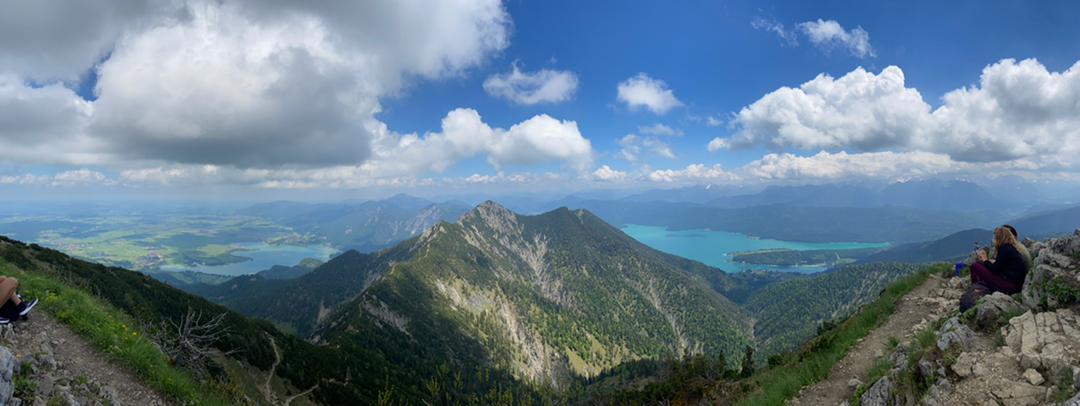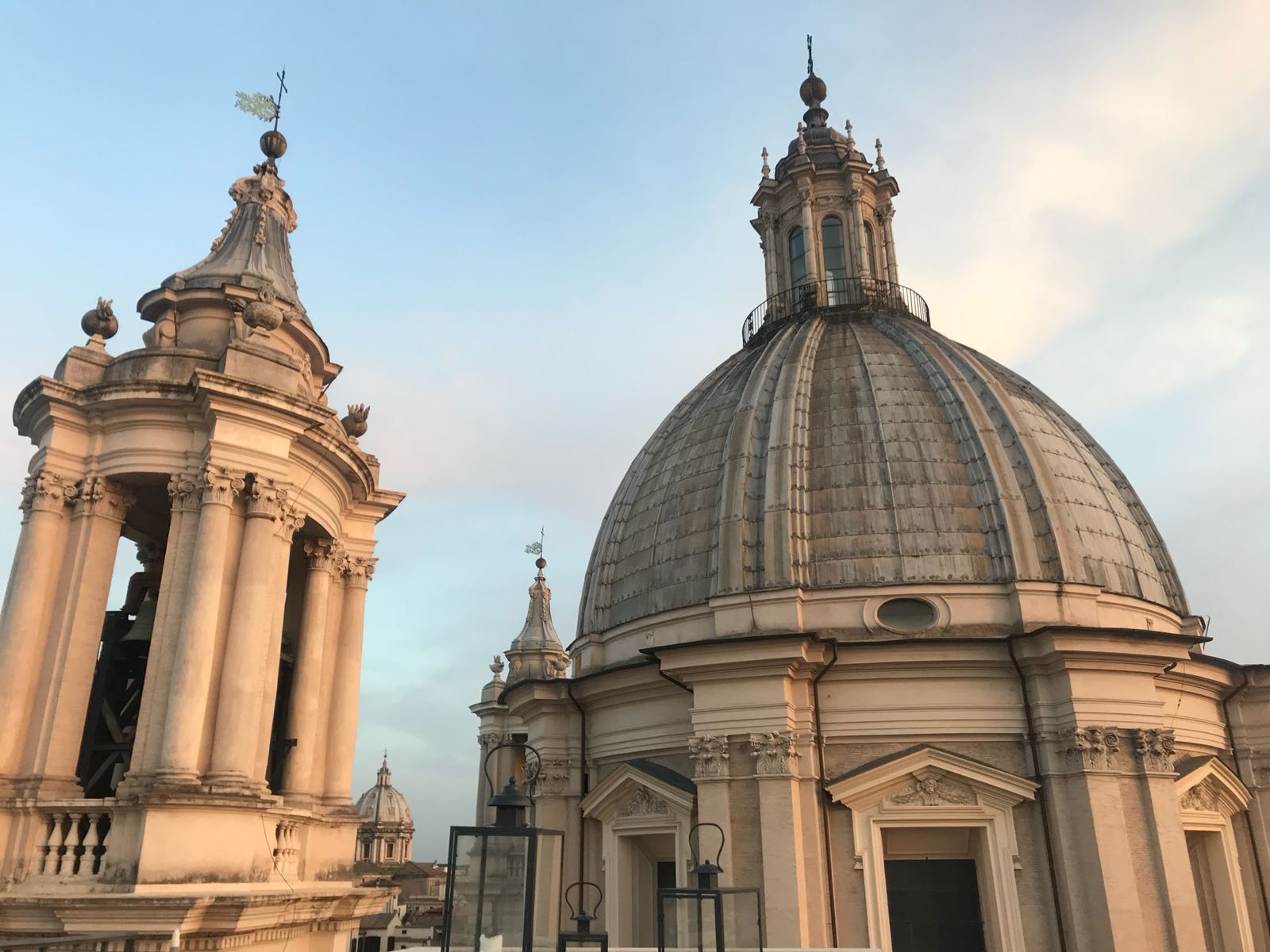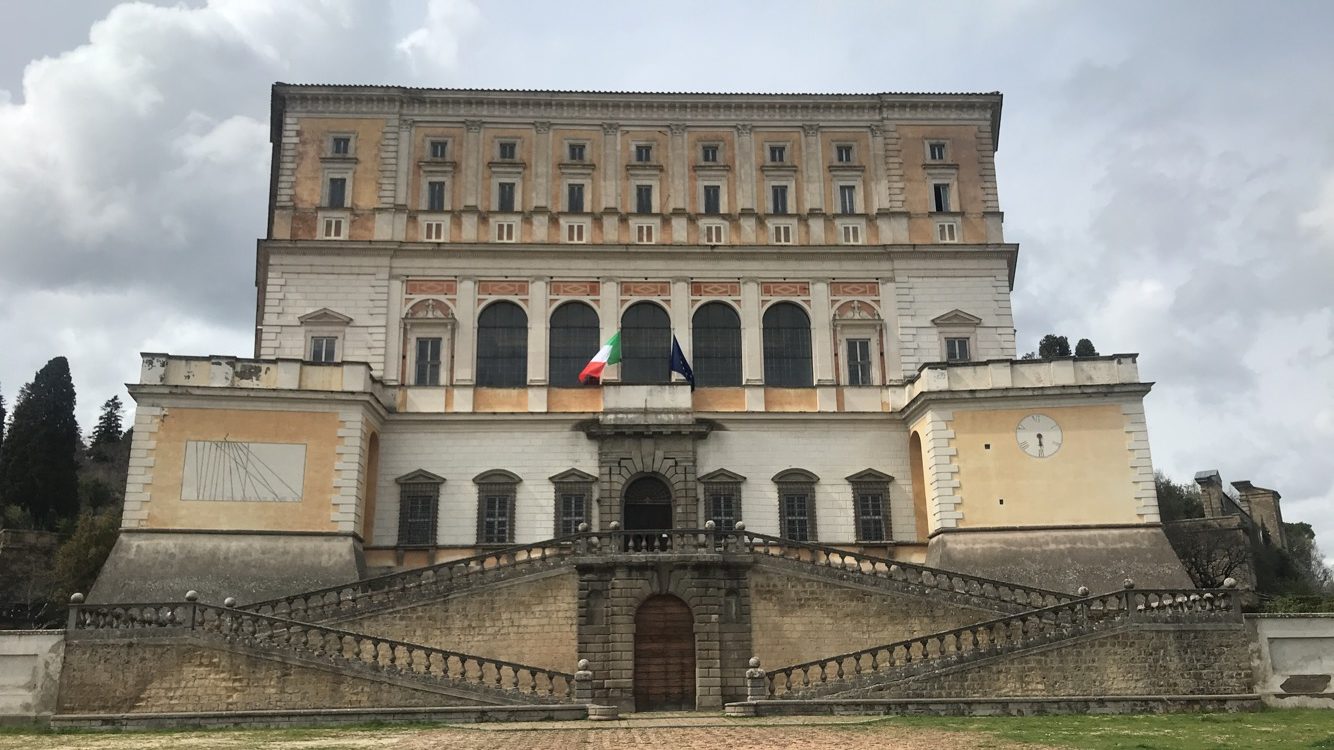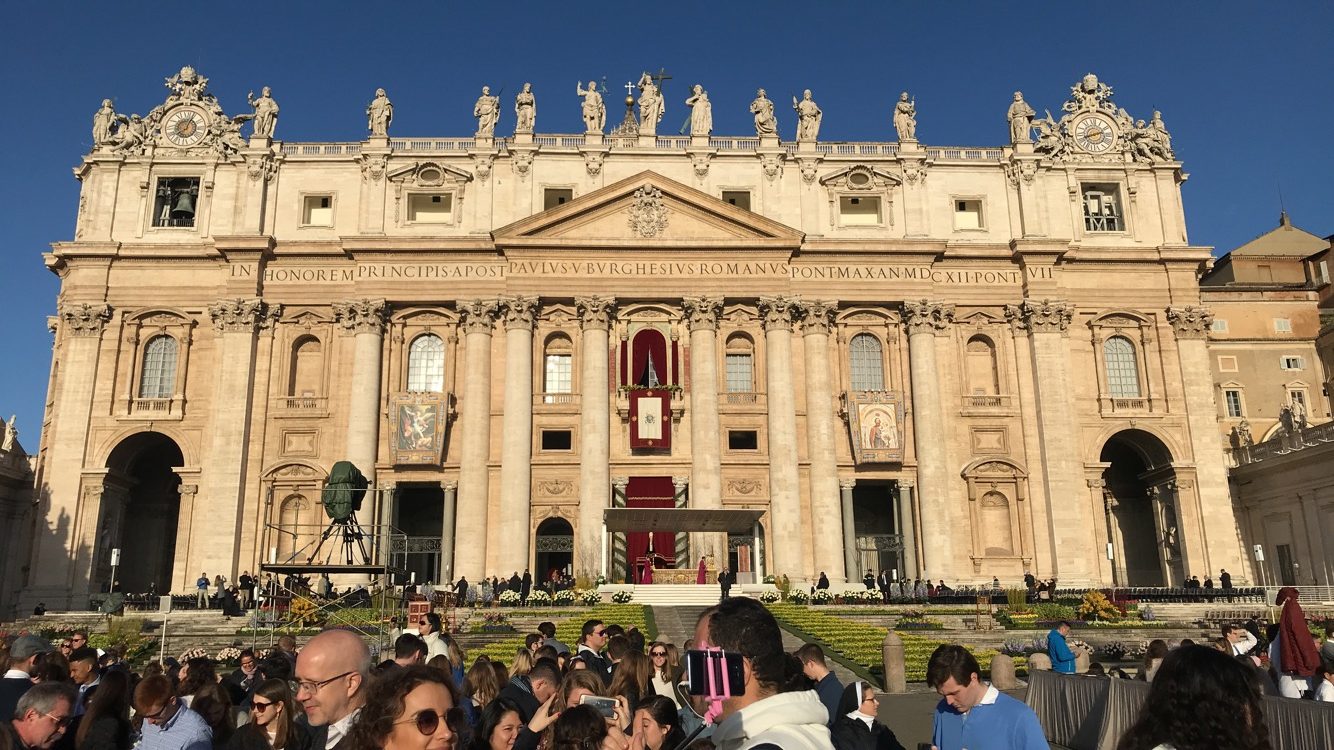
We were all smiles as we kicked off our stay in Dresden by walking through the Neustadt Christmas Markets!

The exterior of the Hofkirche, Dresden's main Catholic church

The interior of the Hofkirche

The Fürstenzug, or Procession of Princes, is a large mosaic mural on the side of the royal castle. It depicts rulers of Saxony, the region of Germany where Dresden is located.

The Frauenkirche, or Church of our Lady, is Dresden's most iconic and visited site. It collapsed due to the tremendous heat of the bombing during World War II, and thanks to a large public effort was rebuilt decades later. The darker stones are the original ones that were reused when the church was being rebuilt. It is a Lutheran church, hence the statue of Martin Luther in the square in front of the building.

Inside the Frauenkirche is the original metal cross from the top of the dome. It's is now twisted and charred, a powerful reminder of the destruction. The new cross that currently stands atop the dome was created by a British goldsmith whose father participated in the bombing of Dresden.

Even though most buildings in the Altstadt, Old Town, are just a few decades old (since they were rebuilt after being destroyed during World War II), they still look a few hundred of years older and maintain Dresden's Baroque character.

The Zwinger Museum's Porcelain Collection is extensive and impressive. The collection, like the palace, originally belonged to Augustus the Strong, a ruler of Saxony.

I thought the Mathematics and Physics Salon was super interesting! It contained so many intricate and precise instruments of all shapes and sizes. This ridiculously huge lensed device was created just to burn things!

The Mathematics and Physics Salon had an entire room dedicated to globes and multiple rooms dedicated to time keeping devices. This particular clock tells the time over the entire world, with 360 small faces, one for each degree of longitude and labeled with a city or island. It was created around 1690.

It felt like every Christmas Market we went to just kept getting better and better. This one had a viewing platform above the sign to provide an overview of the market (next photo).

We had a lovely view of the crowded, yet charming, market. Off to the right, outside the scope of the photo, there was a stage and a ferris wheel, as well as many more market stalls.
We started the day off with a filling breakfast then walked through some Christmas Markets on our way to the Altstadt, or Old City. Once we crossed the Elbe River we went inside the Hofkirche, the city’s major Catholic church. After exploring more Christmas Markets, we went to Dresden’s most visited site: the Frauenkirche. Called the Church of our Lady in English, the building was almost completely destroyed as a result of the intense heat from the severe bombing of Dresden during the Second World War. The rubble was well-documented in the hopes that one day the church would be reconstructed, and roughly four decades later, it was. The reconstructed church now proudly retakes its place in Dresden’s skyline. The reused pieces from the original church can easily be spotted because they were darkened from the fire. The original cross from the top of the dome, which was mangled during the bombing, now stands inside the church. I thought the Frauenkirche was particularly interesting, because I was able compare it to the Cathedral in Coventry, its British counterpart. After visiting the Frauenkirche, we spent the afternoon in the Zwinger Museum. The Zwinger is a baroque palace built in 1709 by Friedrich the Strong. The name refers to a castle standing between inner and outer fortress walls, even though the building’s actual placement doesn’t exactly match that description. This building, like the Frauenkirche and most of Dresden, was heavily damaged during the war but was rebuilt and now houses three spectacular museum collections: Paintings of the Old Masters, the Ceramic Collection, and the Math and Physics Salon. Afterward, we grabbed a dinner to warm us up and then checked out a few more Christmas Markets. They are especially charming at night when they twinkle under the lights! Our Airbnb host actually worked at a stand and gave us a free cup of glühwein, a traditional fruity, spiced, warm wine!
The next morning, while we were grabbing a delicious breakfast at a cafe, we saw our first snow of the year! The snow, plus the fact that the cafe was blasting Christmas music really helped us get in the mood! We spent most of the day roaming through the “old city” and Christmas Markets, eating treats, and enjoying each others’ company! After an early dinner we grabbed our bus and ended the day by arriving in Hamburg!


















Leave A Comment